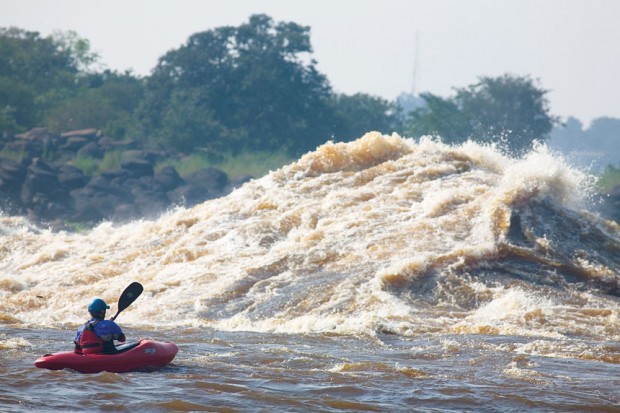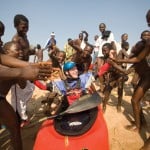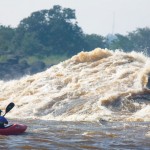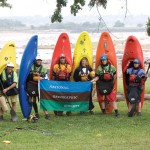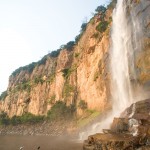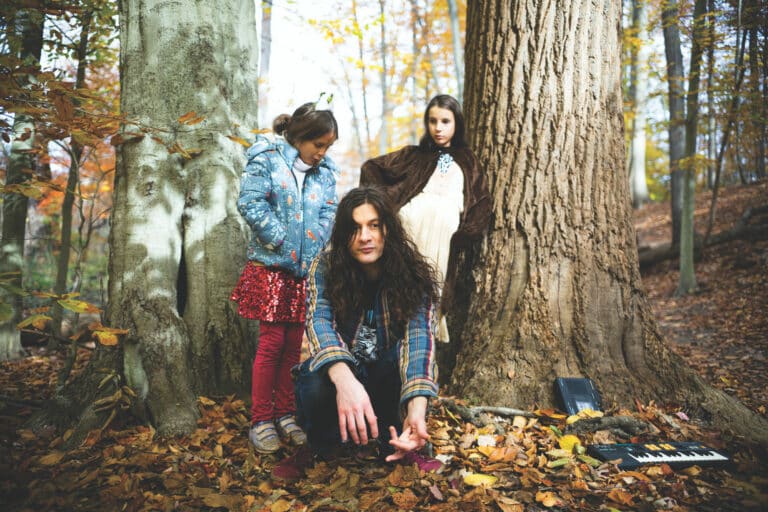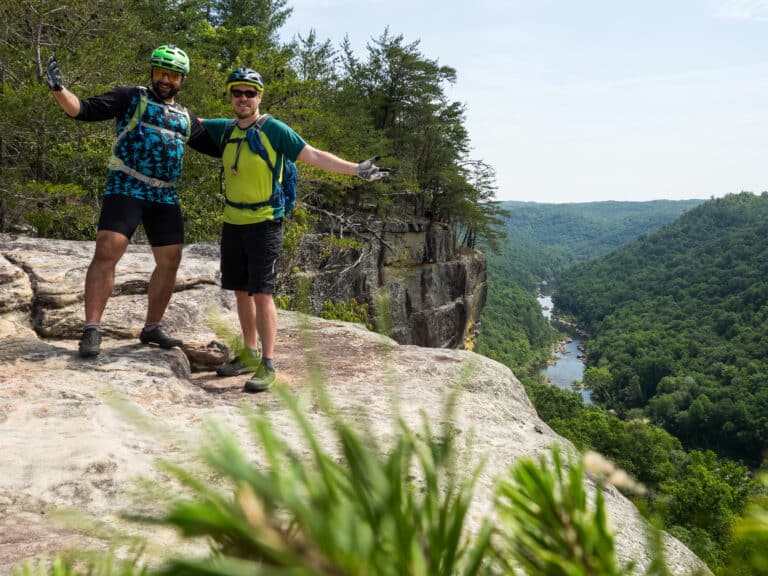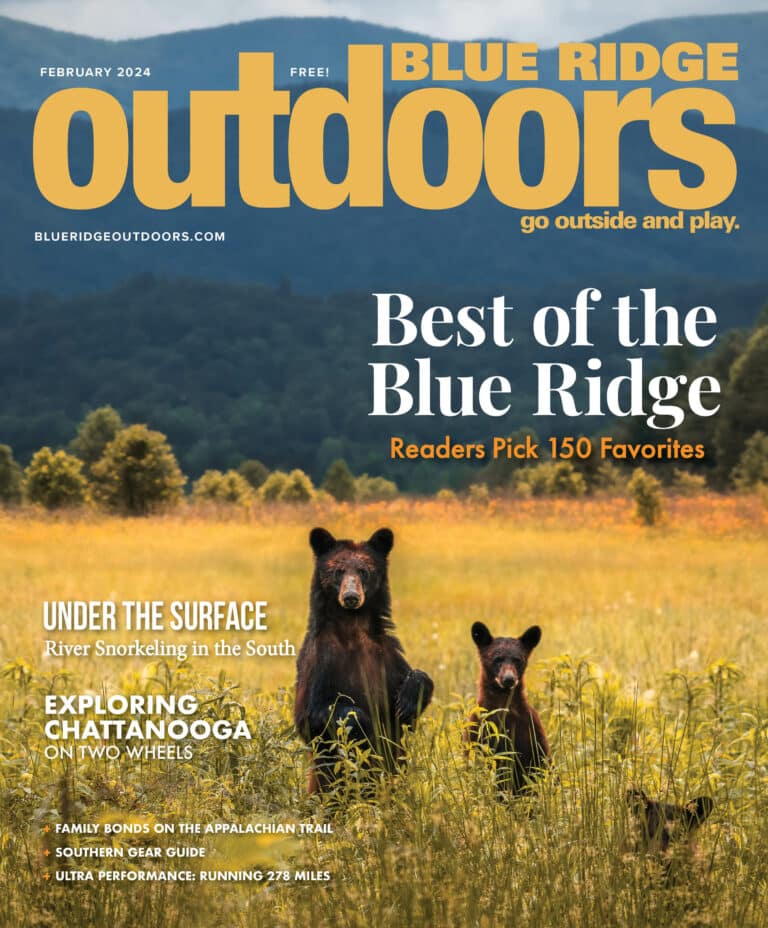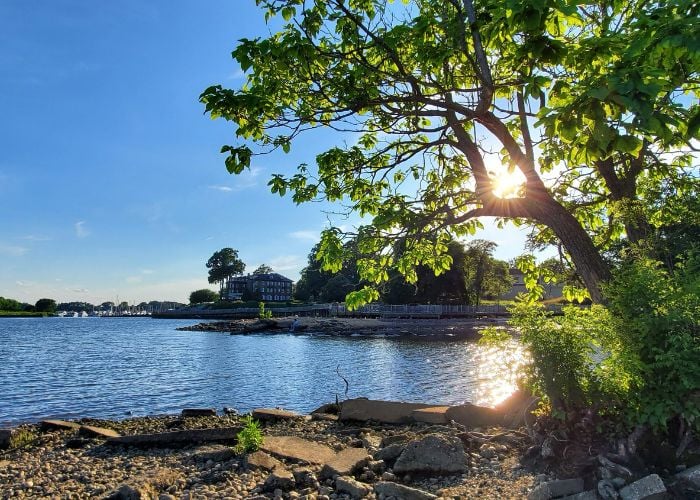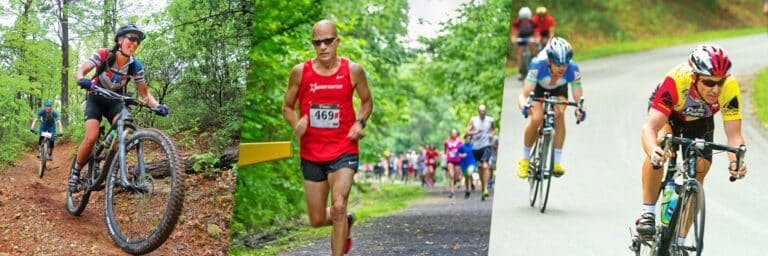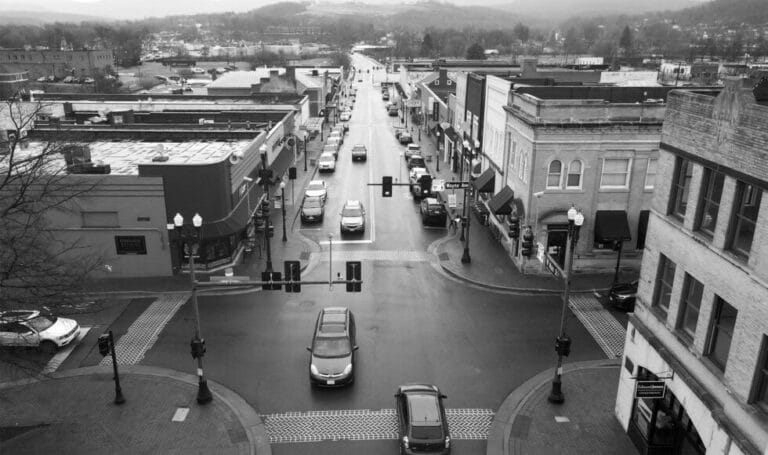Wave Goodbye: Congo expedition paddlers face monstrous swells on the river for five days. Photo: Skip Brown.
We had been in the Democratic Republic of the Congo (DRC) for less than two hours, most of that time spent in the hot, crowded, chaotic crush of airport baggage claim. We hauled our kayaks and gear out into a pitch-black Kinshasa night and drove through a hazy gloom on a dusty road crowded with cars. Pedestrians dashed in and out of traffic with abandon. The only illumination other than our headlights came from hundreds of storefront oil lamps flickering through the dust.
Suddenly, a mini-van slammed into a man crossing the road up ahead. A street vendor of some kind, his body was suddenly propelled into the smoky air, his tray of gum and trinkets briefly weightless before he crumpled to the roadside. The van never slowed and disappeared into the darkness. As we passed, it appeared that the guy was dead. Our driver motored on, explaining that we would likely end up in trouble if we stopped to help, probably get blamed for the accident and anyhow, what would we do? Where would we take him?
“Welcome to the Congo,” someone said.
Visiting this central African country is not for the faint of heart. The worst of colonialism followed by decades of despotic rule has left one of Africa’s largest and potentially richest countries a third-world basket case. Eighty million people live in an area half the size of the U.S. with fewer paved roads than D.C. Through this heart of darkness for nearly three thousand miles runs the Congo River, the second largest river in the world. Only the Amazon carries more water but the Congo has something the Amazon doesn’t – whitewater. Big whitewater.
The Congo runs the length of the DRC twice, draining millions of square miles. Straddling both sides of the equator, it’s always raining somewhere in the Congo drainage, thus providing a fairly constant flow of between 1.5 and 3 million cubic feet per second.
Just downstream of Kinshasa, and within view of the city’s crumbling skyline, the Congo begins a steep drop to the sea. It’s here that an 85-mile long canyon of pool drop whitewater known as the “String of Pearls” begins. The massive volume, combined with modest drop and incredible depths creates a hydrodynamic cauldron that has stymied explorers for centuries. In 1877, explorer Henry Stanley became the first person to travel the length of the Congo. Ultimately it took him 40 days and the loss of some of his party to get through the canyon below Kinshasa, portaging most of the way. His diaries describe the massive wave trains and his 70-foot canoes pointing to the sky as they spun in giant whirlpools.
A century later, a team of French adventurers tried to run the String of Pearls. Film footage shows their rafts heading off into insane whitewater. They disappeared and were never seen again. No bodies were ever found, only a bullet-ridden raft.
The daunting whitewater hasn’t only stymied adventurers. Scientists too have been kept at bay by the river’s ferocity and the DRC’s troubled past. For years it has been a difficult and dangerous place to work and the river is just recently yielding some of her secrets. The large volume, great depths and strong currents have created a habitat for unique evolution of a variety of fish and other species. Ichthyologists and hydrologists are using sophisticated equipment to map current velocities at various river depths. But they can only guess at what lies below the surface of the String of Pearls. In fact, it could be the most interesting, least studied large section of river in the world. One of the purposes of our journey was to make depth readings and hopefully prove that the Congo is the deepest river in the world.
At the invitation of National Geographic Television, our team of pro kayakers was attempting a first successful descent of the String of Pearls. We were trying to run all of the rapids, take water samples at major tributaries and depth soundings, and film and photograph it all.
On the eve of our journey, my mind reeled with concern over the potential dangers we might face. The DRC is an intense and paranoid place, and there are lots of people with guns. Any Army or police officer with a gun can stop you, and they usually try to shake you down with impunity. Taking photographs anywhere is an invitation for trouble.
Then there’s the river: giant whitewater rapids with spine-crushing waves, huge whirlpools, shark-sized fish with shark-sized teeth, crocodiles, and hippos. Ichthyologist Melanie Stiassni said the only thing we need to worry about is the whitewater. Turned out she was wrong.
